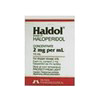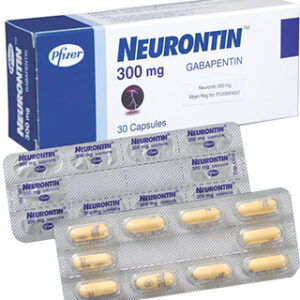Overview of Keppra
Keppra, with its active ingredient levetiracetam, is a medication belonging to the family of drugs known as antiepileptic agents. Utilized primarily to manage and control seizures in individuals with epilepsy, Keppra is often prescribed either alone or in combination with other treatments to help minimize seizure occurrences.
Indications and Usage
Keppra is indicated for the treatment of partial-onset seizures in patients one month of age and older, myoclonic seizures in patients 12 years of age and older with juvenile myoclonic epilepsy, and primary generalized tonic-clonic seizures in patients 6 years of age and older with idiopathic generalized epilepsy. It is versatile in its use across varying age groups and types of seizures, making it a staple in antiepileptic therapy.
Dosage and Administration
The dosing regimen for Keppra varies based on the patient’s age, weight, and type of seizure being treated. For example, the initial dose for adults and adolescents weighing more than 50 kg may begin at 500 mg twice daily, which can be increased depending on the response and tolerance of the patient. In younger individuals and those with body weight considerations, dosing is often calculated based on mg per kg of body weight. Keppra can be administered orally and is available in multiple forms, including tablets, oral solution, and injectable solution for those unable to take oral medication.
Contraindications and Precautions
Keppra should not be used in individuals who have had a previous hypersensitivity reaction to levetiracetam or other pyrrolidine derivatives. Special attention should be taken in patients with compromised renal function, as dosage adjustments may be necessary. Keppra can also cause somnolence and fatigue; thus, individuals should be cautioned about operating machinery or performing other hazardous tasks until they are familiar with Keppra’s effects on their body.
Drug Interactions
Levetiracetam does not typically induce or inhibit hepatic cytochrome P450 isoenzymes; hence, drug interactions with other agents metabolized through these pathways are limited. However, caution should be exercised when combining Keppra with other central nervous system (CNS) depressants or medications that may impair kidney function, as these can exacerbate adverse reactions or affect medication clearance.
Adverse Reactions
While generally well-tolerated, Keppra can cause adverse reactions in some patients. These may include, but are not limited to, CNS effects such as somnolence, fatigue, and dizziness. Behavioral abnormalities like irritability and aggression have also been reported. More rare but serious adverse reactions can include leukopenia, thrombocytopenia, and pancytopenia.
Clinical Pharmacology
The precise mechanism through which Keppra exerts its antiepileptic effect remains unknown. However, studies suggest that levetiracetam may modulate neurotransmitter release through its binding to the synaptic vesicle protein SV2A, which could contribute to its antiepileptic properties.
Pharmacokinetics
Levetiracetam is well-absorbed orally with bioavailability close to 100% and is not significantly influenced by food. The drug has a relatively short half-life of roughly 7 to 8 hours in adults, necessitating twice-daily dosing to maintain therapeutic levels. Keppra is primarily excreted unchanged in the urine, thus requiring dose adjustments in patients with renal impairment.
Safety and Efficacy
Clinical trials and post-marketing studies have demonstrated Keppra’s effectiveness in reducing the frequency of seizure episodes across various patient populations. Long-term use has proven to be safe when patients are monitored appropriately, with adjustments made for any signs of adverse effects or changes in clinical status. Moreover, the wide therapeutic index of Keppra makes it an appealing option in the management of epilepsy.
Special Populations
There are particular considerations for special groups such as pregnant women, the elderly, pediatrics, and those with renal impairment when using Keppra. In pregnant women, there is a potential for fetal harm, and the benefits of seizure control must be carefully weighed against the risks. The elderly may require lower doses due to potential decreases in renal function. Pediatric dosing must be carefully calculated based on weight and maturity, and adolescents transition into adult dosing protocols. Patients suffering from renal conditions will likely need dosage reductions to accommodate their decreased clearance of the medication.
Overdosage
Symptoms of Keppra overdosage may include drowsiness, agitation, aggression, depressed levels of consciousness, respiratory depression, and coma. In such situations, immediate medical attention is crucial. Treatment of an overdose will typically involve supportive care, monitoring of vital functions, and measures to ensure adequate airway, respiration, and cardiovascular function. Hemodialysis may be utilized in severe cases to facilitate drug clearance.
Warnings and Precautions
Keppra therapy comes with several warnings and precautions, including the risk of suicidal behavior and ideation. Behavioral abnormalities, such as aggression, anger, and anxiety, have been observed. Patients with significant renal impairment should be closely monitored, and dosage adjustments made accordingly. Patients should also be warned about the potential for serious dermatological reactions and multi-organ hypersensitivity reactions.
Patient Counseling Information
Patients must be educated on the importance of adhering to prescribed dosages, aware of the potential side effects, and counseled on the need to communicate any unusual behavioral or mood changes. It should be made clear that while Keppra might control seizures, it does not cure epilepsy and sudden discontinuation can precipitate withdrawal seizures.
Storage and Handling
Keppra tablets and oral solution should be stored at 25°C (77°F), with a permissible range of 15°C to 30°C (59°F to 86°F). It is advisable to keep the medication in its original container and out of the reach of children. The injectable solution should be stored under refrigeration and used within a specific period after opening.
How Supplied
Keppra is supplied in various forms and strengths: Tablets are available in 250 mg, 500 mg, 750 mg, and 1000 mg dosages; the oral solution is supplied in 100 mg/mL strength; and the injectable solution comes in 100 mg/mL for intravenous use. All forms of the medication are to be dispensed with detailed information for the patient to ensure proper use and handling.






Reviews
There are no reviews yet.